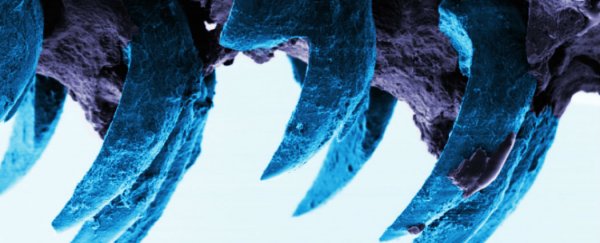Spider silk is pretty amazing. It has the tensile strength of a high-grade steel alloy, and about half that of the synthetic woven material, Kevlar. It also has just a sixth of the density of steel, which means you could take a strand that's long enough to wrap around the whole Earth, and it'd weigh less than 500 grams. This quality means that spider silk would be five times as strong as the same weight of steel.
And while we can't take away from its incredible properties, we just might have to take away its title of 'strongest natural material', because researchers have figured out just how strong the teeth of limpets, a type of marine snail, are.
"Until now, we thought that spider silk was the strongest biological material because of its super-strength and potential applications in everything from bullet-proof vests to computer electronics," lead author Asa Barber, from the School of Engineering at Portsmouth University in the UK, said in a press release. "But now we have discovered that limpet teeth exhibit a strength that is potentially higher."
Barber's team made the discovery by examining the tiny teeth right down to their atomic structure. Publishing in the Royal Society's scientific journal, Interface, they report finding a super-hard, iron-bearing hydroxide mineral called goethite in the tooth structures. According to The Guardian, the mineral forms in the limpet as it grows, and it helps the little marine creature scrape over rock surfaces and peel algae away from them for food.
And now that they've found it, the researchers think the structure of the material could be copied and synthetically manufactured to be used in making structures of cars, boats, and planes.
"We discovered that the fibres of goethite are just the right size to make up a resilient composite structure. This discovery means that the fibrous structures found in limpet teeth could be mimicked and used in high-performance engineering applications such as Formula One racing cars, the hulls of boats and aircraft structures," Barber told The Guardian. "Engineers are always interested in making these structures stronger to improve their performance or lighter so they use less material."
Source: The Guardian
